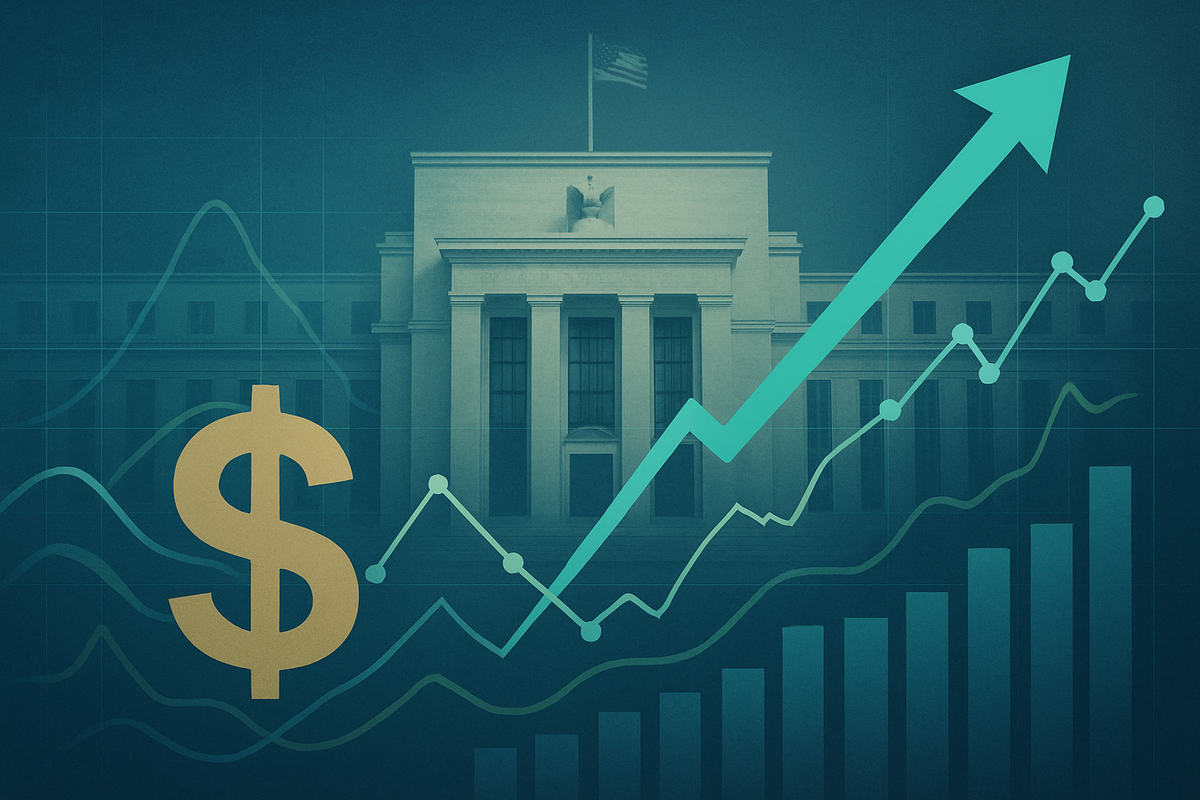
Washington D.C. – October 29, 2025 – In a highly anticipated move that has gripped financial markets, the Federal Reserve today announced a crucial 25-basis-point reduction in its benchmark interest rate, setting the new target range at 3.75% to 4.00%. This marks the second such cut this year, signaling the central bank's intent to bolster a softening labor market and sustain economic momentum. The decision, widely telegraphed by market indicators, arrives amidst an unusual economic landscape, complicated by an ongoing government shutdown that has delayed the release of vital economic data.
The immediate implications of this decision are far-reaching. While intended to stimulate growth and employment, the cut also navigates persistent inflationary pressures and a divided outlook among policymakers. Investors are now keenly scrutinizing the Fed's forward guidance for clues on future policy trajectory, as the central bank attempts a delicate "soft landing" – reining in inflation without triggering a recession.
Fed Navigates Data Blackout to Deliver Expected Rate Cut
The Federal Reserve's decision to cut interest rates on October 29, 2025, culminates a period of intense market speculation and economic crosscurrents. The Federal Open Market Committee (FOMC), the Fed's primary monetary policy-making body, met on October 28-29, with the announcement delivered today at 2:00 PM ET, followed by a press conference by Chair Jerome Powell.
Leading up to this moment, the market had priced in a near 100% probability of a 25 basis point cut, largely driven by concerns over a weakening labor market. This followed a similar rate reduction in September 2025. Despite a robust 3.8% GDP growth reported last quarter, the Fed's dual mandate—maximum employment and price stability—saw the employment pillar take precedence. Recent Consumer Price Index (CPI) data, showing headline inflation inching up to 3% but core inflation easing slightly, provided some room for the dovish shift. However, the decision was not without its complexities; an ongoing government shutdown created a "data blackout," leaving the Fed "largely in the dark on the data side" regarding official inflation and employment reports, forcing reliance on private sector data and prior releases.
Key players in this decision include the 12 voting members of the FOMC, led by Chair Jerome H. Powell. The Board of Governors and the rotating presidents of the regional Federal Reserve Banks contribute diverse perspectives. Market participants—from bond traders and stock investors to businesses and consumers—are the primary stakeholders, directly impacted by the cost of borrowing. Initial market reactions ahead of the announcement indicated a broad anticipation of the cut, with U.S. futures pointing to a positive open, gold futures rebounding, and the S&P 500 and Dow Jones Industrial Average (NYSEARCA: DIA) reaching new record highs. Mortgage rates had also dipped in expectation, though the full market response will now hinge on Chair Powell's post-meeting commentary and the Fed's signals for future actions.
Market Winners and Losers: The Ripple Effect of Cheaper Money
The Federal Reserve's decision to cut interest rates will inevitably create a distinct landscape of winners and losers across various sectors and public companies, primarily by altering borrowing costs and investment incentives.
Expected Winners:
- Real Estate and Home Construction: Lower mortgage rates, a direct consequence of Fed cuts, make homeownership more affordable and stimulate housing demand. This benefits homebuilders like D.R. Horton Inc. (NYSE: DHI) and Lennar Corporation (NYSE: LEN), as well as suppliers such as Builders FirstSource (NASDAQ: BLDR).
- Real Estate Investment Trusts (REITs): As bond yields decline, investors often seek higher-yielding alternatives, making dividend-paying REITs like Realty Income Corporation (NYSE: O) more attractive.
- Technology and Growth Stocks: Companies in these sectors, often reliant on debt for expansion and valued on future earnings, benefit significantly. Lower borrowing costs reduce their cost of capital, enhancing the present value of future cash flows. Giants like NVIDIA Corporation (NASDAQ: NVDA) and Alphabet Inc. (NASDAQ: GOOGL) are poised to gain.
- Consumer Discretionary: Cheaper consumer loans (credit cards, auto loans) typically lead to increased spending on non-essential goods and services, boosting this sector.
- Industrials: Reduced borrowing costs can spur capital-intensive projects and general industrial activity, benefiting companies like Caterpillar Inc. (NYSE: CAT).
- Companies with High Debt Loads: Businesses carrying substantial variable-rate debt will see their interest expenses decrease, improving their profitability.
Expected Losers (or Less Favorably Impacted):
- Traditional Financials: While overall market activity might increase, lower policy rates can compress net interest margins (NIM) for large commercial banks like JPMorgan Chase & Co. (NYSE: JPM) and Bank of America Corporation (NYSE: BAC). Insurers, such as Allstate Corporation (NYSE: ALL), investing in fixed-income securities might also see reduced returns.
- "Bond-Proxy" Sectors: High-dividend utilities and consumer staples, traditionally sought for stable yields, may lose some relative appeal as investors rotate into riskier assets or growth stocks in a lower-rate environment.
Should the Fed have held rates steady against expectations of a cut, sectors like real estate and growth stocks would likely have seen a downturn. An unexpected hike, though highly improbable given current conditions, would have severely impacted growth-oriented and highly leveraged companies while potentially boosting traditional financial institutions.
Broader Significance: Navigating Global Economic Currents
The Federal Reserve's interest rate decision on October 29, 2025, transcends immediate market reactions, embedding itself within broader industry trends and generating significant ripple effects across the global economy. This pivotal monetary policy move aims to balance the dual mandate of maximum employment and stable prices.
The anticipated rate cut signals the Fed's proactive stance to stimulate economic growth. Cheaper borrowing costs are expected to encourage consumer spending and business investment, providing an injection of capital into various sectors. This can lead to increased competition, particularly in capital-intensive industries like IT, where startups and existing players can secure financing more easily. Supply chains may also see adjustments as businesses leverage lower-cost loans to manage inventory and cash flow. Globally, lower U.S. rates tend to weaken the dollar, making American exports more competitive and potentially boosting capital flows into emerging markets, though this also carries risks of asset bubbles.
From a regulatory and policy standpoint, this decision reaffirms the Fed's data-dependent approach, even when faced with data scarcity due to the government shutdown. Beyond the federal funds rate, analysts anticipate the Fed may also signal an end to its quantitative tightening (QT) program by December 2025. Halting the reduction of its balance sheet would further ease liquidity conditions, complementing the rate cut. The decision also impacts government borrowing costs, with lower rates reducing the expense of financing national debt.
Historically, the Fed has employed rate cuts to stimulate growth during downturns, such as the emergency cuts during the 2020 COVID-19 pandemic or the aggressive easing during the 2008 Great Recession. Conversely, periods of high inflation, like the post-pandemic era or the 1980s under Paul Volcker, have seen aggressive rate hikes. Today's action aligns with historical precedents of using cuts to support a slowing labor market, aiming for a "soft landing" where inflation is managed without a severe economic contraction. However, the unique challenge of a data blackout adds an unprecedented layer of complexity to this historical parallel.
The Road Ahead: Opportunities, Challenges, and Strategic Shifts
The Federal Reserve's October 29, 2025, interest rate cut sets the stage for both short-term adjustments and long-term strategic considerations for businesses and investors alike. The immediate impact will be felt in borrowing costs, consumer spending, and market sentiment, but the lasting effects will shape economic trajectories for months and years to come.
Short-Term Possibilities: In the immediate aftermath, borrowing costs for mortgages, credit cards, and business loans are expected to decline. This could provide a modest boost to consumer spending and business investment. Equity markets, particularly growth stocks, may experience a positive bounce, while bond prices are likely to appreciate. However, if Chair Powell's forward guidance is more cautious than the market's aggressive expectations for further cuts, a period of volatility and potential disappointment could ensue.
Long-Term Possibilities: Over the longer term, the rate cut aims to sustain economic growth and prevent a significant downturn in the labor market. However, a prolonged period of low rates could reignite inflationary pressures if not carefully managed. Businesses might be encouraged to take on more debt, and the risk of asset bubbles could increase. The Fed's ability to balance these outcomes will determine whether the economy achieves a "soft landing" or faces challenges like persistent inflation (stagflation) or even a "hard landing" if growth falters.
Strategic Pivots and Adaptations:
- For Businesses: In this rate-cutting environment, companies should explore opportunities for investment and expansion, leveraging cheaper financing for capital expenditures or mergers and acquisitions. Refinancing existing debt at lower rates can free up cash flow. Businesses should also remain vigilant about potential inflationary pressures and adjust pricing strategies accordingly.
- For Investors: A shift from cash and money market funds, whose yields will likely decline, into equities—especially growth stocks, real estate, and emerging markets—may be prudent. Longer-maturity government bonds could offer capital appreciation. Diversification across asset classes and geographies will be key to mitigating risks from potential market volatility.
Market Opportunities and Challenges: Opportunities may emerge in specific sectors like technology, housing, and consumer discretionary. A weaker U.S. dollar, often a consequence of rate cuts, could also boost capital inflows into emerging markets. Challenges include potential market volatility if the Fed's guidance disappoints, the risk of a credit crunch if lending standards tighten despite lower rates, and the persistent threat of inflation eroding purchasing power.
The Path Forward: Vigilance in a Dynamic Landscape
The Federal Reserve's interest rate decision today marks a significant juncture in the ongoing effort to steer the U.S. economy. The 25-basis-point cut is a clear signal of the central bank's commitment to supporting the labor market and fostering economic growth, even as it carefully monitors lingering inflationary pressures.
Key Takeaways: The Fed has acted decisively to ease monetary policy, aligning with broad market expectations for a "risk management" cut. This move, coupled with the anticipated conclusion of quantitative tightening, provides a substantial dose of stimulus. However, the nuance of the Fed's future outlook and the potential for internal dissent highlight the delicate balancing act required.
Market Assessment: Moving forward, markets will likely remain sensitive to any shifts in the Fed's rhetoric. While equity markets may initially cheer the cheaper cost of capital, investor sentiment will be heavily influenced by Chair Powell's commentary on the future trajectory of rates. Fixed-income investors will see bond prices appreciate, while the U.S. dollar may soften, potentially boosting commodities like gold. The housing market should continue to see support from lower mortgage rates.
Lasting Impact: The cumulative effect of these monetary policy adjustments will have a profound and lasting impact, influencing borrowing costs, investment decisions, and the overall financial landscape for years. The Fed's attempt at a "soft landing" is a complex endeavor, made more challenging by the current "data blackout" from the government shutdown.
What Investors Should Watch For: In the coming months, investors must remain highly vigilant. Close attention should be paid to:
- Future Fed Communications: Any statements from Fed officials, particularly Chair Powell, regarding the 2026 rate path will be critical.
- Resumption of Economic Data: Once the government shutdown ends, the release of delayed jobs reports, inflation figures, and GDP data will provide crucial insights that could sway future Fed policy.
- Quantitative Tightening Details: Specific announcements on the winding down of the Fed's balance sheet reduction program will offer further clarity on liquidity conditions.
- Corporate Earnings: The upcoming earnings reports will reveal the health of public companies and their ability to adapt to the evolving economic environment.
- Global Developments: International economic conditions and geopolitical events could introduce new uncertainties or opportunities.
In this dynamic environment, a disciplined and diversified investment approach, coupled with a focus on long-term goals, will be paramount for navigating the evolving market landscape.
This content is intended for informational purposes only and is not financial advice





